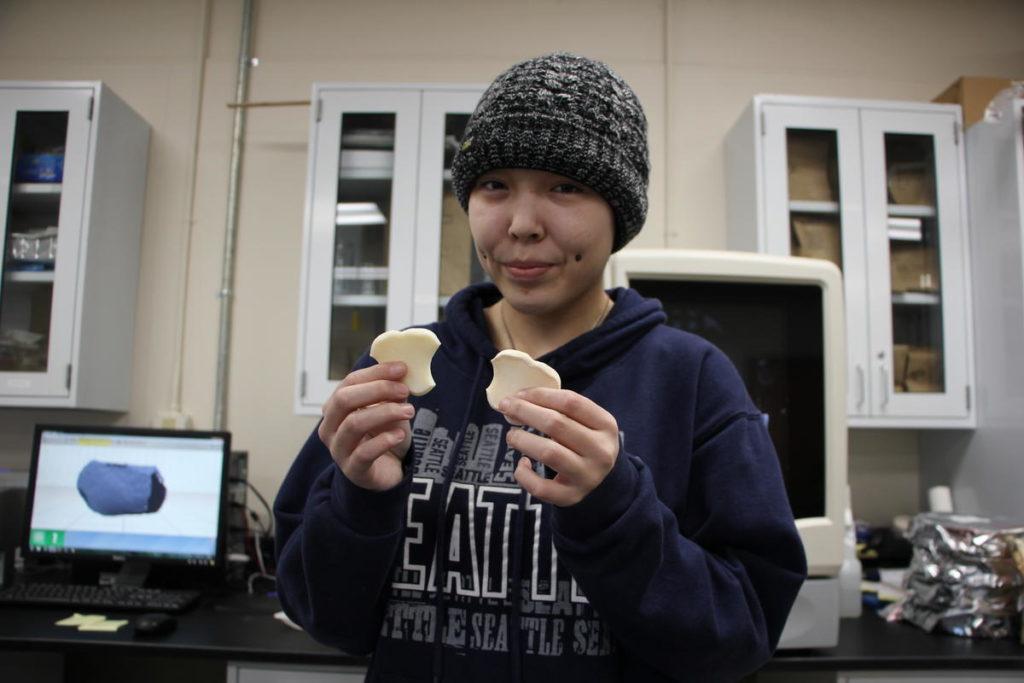 In 2011, three killer whales surprised the public and confused biologists when they swam approximately 70 miles up the Nushagak River. Killer whales, or as they are also known Orcas, live in saltwater and the southwestern Alaska’s Nushagak River is freshwater. While whales have occasionally ventured into the mouth of the river when following salmon, this was the first time that anybody remembers Orcas swimming this far. Unfortunately, it was also the last swimming done by these whales as they died in the river without having been able to return to their native environment.
In 2011, three killer whales surprised the public and confused biologists when they swam approximately 70 miles up the Nushagak River. Killer whales, or as they are also known Orcas, live in saltwater and the southwestern Alaska’s Nushagak River is freshwater. While whales have occasionally ventured into the mouth of the river when following salmon, this was the first time that anybody remembers Orcas swimming this far. Unfortunately, it was also the last swimming done by these whales as they died in the river without having been able to return to their native environment.
Their deaths raised gruesome questions about what to do with their bodies. Whatever was decided would be no small feat as the whales range in weight from 3,000 to 8,000 pounds each. One of the whales was hauled on shore for examination and it was determined that it was female and it had been pregnant. Scientists from the National Oceanic and Atmospheric Administration (NOAA) saved the skeleton of both the mother and the baby for further study, but it proved difficult because the bones of the fetus were not yet fused together to form a single skeleton. In addition, given the cartilaginous nature of the bones, they were particularly vulnerable to decay.
It was then that the idea hatched to 3D scan the bones, thus creating an easily preservable and infinitely reproducible 3D printable record of the Orca fetus. A collaboration between the Dillingham City School District, the University of Alaska Fairbanks Bristol Bay Campus, and Nunamta Aulukestai, an organization that works with Bristol Bay village corporations and tribal governments to help responsible manage the land and water in the region, began in order to support these efforts. The project was named the Nushagak Orca Articulation Project. What this has meant on a day to day basis is that, for the past two years, high school student Cheyenne Roehl travels to UAF Bristol Bay Campus and works for several hours scanning the bones to create digital models in a CAD software program. She recently described her work in a radio interview with Alaska’s Bristol Bay public radio station:The prize at the end of all of this work will be the fully assembled skeleton and the bones are already being 3D printed as the scans are perfected and prepared for what will be a massive scale, three-dimensional jigsaw puzzle. Once all of the pieces are ready, the team will grow to include more students to engage in the process of assembling the six-foot-long creature. This will, no doubt, provide an opportunity to study the fetus in depth and develop a broader understanding of the life cycles of killer whales, and all while working to strengthen the interest of high school students both in science and technology. So while the outcome was unfortunate for the whales, at the very least, they did not die for nothing, and 3D technology is helping to make sure of that. Discuss in the Killer Whales forum at 3DPB.com. [Source: KDLG]“I get one of the bones, and I put it on the scanner. We have to get multiple scans, and then align them together. And then we make sure it looks like the bone, and then we get a finalized water tight model…I’m making it sound a lot more simple than it actually is. I see a lot of holes and places that scanned very well to have a lot more detail for the scan because we use a laser, and if it’s slanted a little bit, the scanner won’t be able to pick up that data…It’s really exciting because you know that they’re going to be turned into a 3D model skeleton, and that will be beautiful.”
Subscribe to Our Email Newsletter
Stay up-to-date on all the latest news from the 3D printing industry and receive information and offers from third party vendors.
You May Also Like
3D Printing News Unpeeled: A $3000 SLS System, Construction Subsidies and Parameters
The Housing Affordability Crisis is one of Canadian President Trudeau’s biggest issues. Now the government has made subsidies available, including scaling new technologies, 3D printed housing and libraries of reapproved...
“Bundled Light” Enables High Quality Plastic 3D Printing from LEAM
Naturally, we expect current 3D printing methods to continuously improve, but it continues to do so in the most surprising ways. The latest development comes from LEAM, a startup spun...
Each to Their Own: Exploring Creality’s Latest Ender Trio as the Company Strengthens Its Commitment to 3D Printing Advocacy
Creality has reaffirmed its commitment to promoting 3D printing. The launch of the Ender-3 V3 SE, Ender-3 V3 KE, and Ender-3 V3 showcases the company’s dedication to catering to diverse...
3D Printing News Briefs, March 23, 2024: AM in the US Coast Guard, Navy, & More
In today’s 3D Printing News Briefs, we’re discussing the use of 3D printing in various branches of the military, including the U.S. Coast Guard, the U.S. Navy, and the German...

































